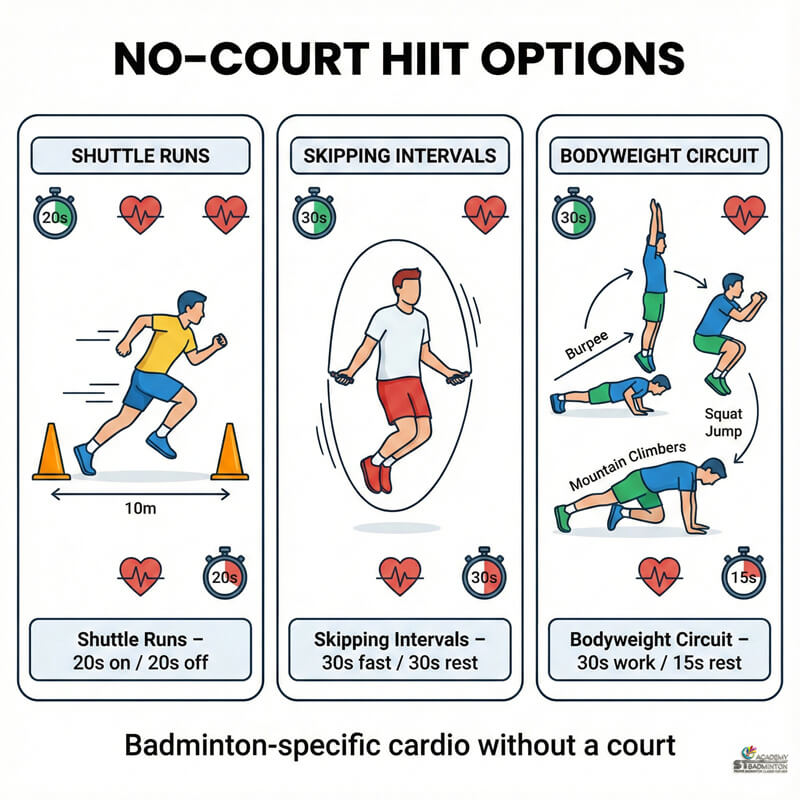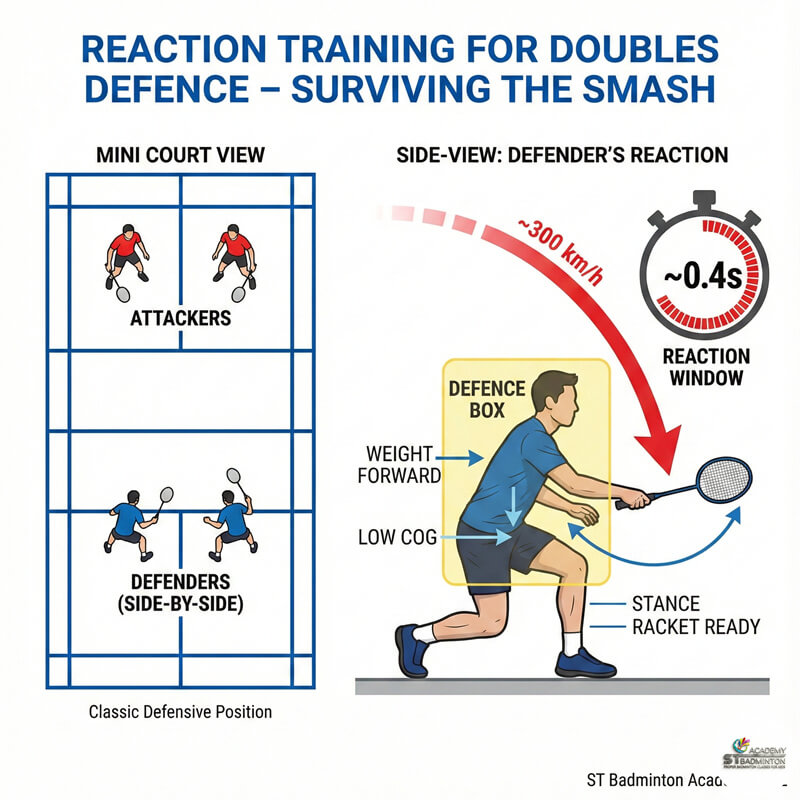Welcome to ST Badminton Academy’s badminton training in Malaysia!
Badminton is so much more than just smashing shuttles around the court – it’s about strategy, skill, and most importantly, having enough energy to keep going for long matches. But how do we build up our stamina? That’s why I’m here to talk about how improving your cardio can have a huge impact on your performance during those tough games.
Sure, playing regular matches with friends or competing against other players will help you improve over time – but if you really want success on the court then it’s important to consider what kind of conditioning you’re doing off-court too.
In this article, we’ll explore why strengthening your cardiovascular system is essential for high-level badminton play and provide some advice on how to get started with an effective cardio routine.
So let’s dive into it!
Benefits Of Cardiovascular Training For Badminton
The thrill of a long badminton match is like no other. Every volley, every smash, and every serve culminates in an intense experience that leaves you feeling alive and energized. But such intensity can be exhausting if your body isn’t prepared for it.
That’s why cardiovascular training is key to playing longer matches with more stamina – the kind that allows you to stay one step ahead of your opponents. With some stretching drills and nutrition planning, you’ll have all the tools necessary to develop an endurance level that will make even professional players jealous!
From running sprints on the court to strength-building exercises off the court, there are many types of aerobic activities available for improving your badminton performance. Whether it’s jogging or interval training, each type has its own unique benefits when done correctly – allowing you to customize your routine based on specific goals while keeping exhaustion at bay during those long matches.
Types Of Cardiovascular Exercise
When it comes to cardiovascular exercise, aerobic exercise is the foundation of any good training plan.
Interval training can take your fitness to the next level and is especially important for badminton players who need to be able to sustain their performance over long matches.
Cross-training is also important; it helps keep your workouts fresh and engaging, while also developing your overall athleticism.
Aerobic Exercise
Aerobic exercise is essential for any badminton player who wants to maintain the physical conditioning necessary to compete at a high level.
This type of cardio training involves frequent, low-intensity exercises that allow you to get your heart rate up and keep it there for an extended period of time.
It’s important that this type of workout be done regularly in order to improve endurance and build stamina, so I recommend at least 3 times per week.
Not only will this help you become a better player on the court but will also have long-term benefits such as improved cardiovascular health overall.
So if you want to stay competitive during those long matches, make sure aerobic exercise is part of your regular routine!
Interval Training
Interval training is another great way to get the most out of your cardiovascular workouts.
These short bursts of high-intensity exercise will help you improve your speed and agility, while also improving how efficiently your body uses energy sources like fat and carbohydrates for fuel.
It’s a great way to maximize your respiratory control too – by pushing yourself into higher intensity levels during interval exercises, you can learn to control your breathing better so that it stays balanced even when playing long matches.
Interval training should be incorporated into any serious badminton player’s routine in order to stay competitive on the court!
Cross-Training
Cross-training is also a great way to stay in top shape for badminton.
Incorporating other activities like interval running and aerobic biking into your workout routine can be beneficial as it helps you build strength, increase endurance, and improve overall fitness levels.
This type of exercise will help you get the most out of your cardiovascular workouts by challenging different muscles throughout the body.
Plus, cross-training keeps things interesting so you don’t become bored with just one activity!
I recommend that all serious badminton players incorporate some form of cross-training into their regular workout routines so they remain competitive on the court.
Heart Rate Training For Badminton
When it comes to badminton and endurance, the key to success is having a good cardiovascular training program in place.
As an expert on this topic, I can tell you that heart rate training should be at the forefront of your approach. Properly tracking your heart rate during exercise is essential for improving muscular endurance, recovery techniques, and overall performance on the court.
Monitoring your heart rate helps you reach optimal physical states like aerobic and anaerobic thresholds which are necessary for long-match play. This ensures that you don’t overwork yourself or suffer from fatigue too quickly. It also allows you to maximize benefits from each workout so that you’re physically prepared for any challenge thrown at you during a match.
With thoughtful implementation, heart rate training will help take your game to the next level. Now let’s talk about factors to consider when designing a cardiovascular training program…
Factors To Consider When Designing A Cardiovascular Training Program
I’m an expert in badminton and cardiovascular training, so I know how important it is to consider all of the factors when designing a program.
Heart rate, intensity, rest intervals, duration, frequency, type of exercise, environment, warm-up, cool-down, body composition, age, goals, nutrition, hydration, and recovery all play a role in the effectiveness of a cardiovascular training program.
I make sure to take all of these factors into account when designing a program for an individual, so they can get the best results.
Heart Rate
When it comes to designing a cardiovascular training program, heart rate is an important factor to consider.
As a badminton and cardio trainer, I know how vital it is for athletes to understand their own individual heart rates so that they can adjust their exercise intensity accordingly.
Plus, having this knowledge helps them maximize the benefits of interval training and increase their aerobic capacity during long matches.
It’s also essential in helping players recognize when they need to take a break or when they should continue pushing themselves – both mentally and physically – for optimal performance.
All in all, understanding your personal heart rate is key for any badminton player looking to get the most out of their endurance training.
Intensity
Intensity is another important factor to consider when designing a cardiovascular training program.
Other than choosing a good racket and also remember to choose the best badminton restring in Malaysia. Badminton players need to know how hard they can push themselves and for how long, as well as understand the importance of recovering properly afterward in order to prevent muscle fatigue.
As an expert, I always recommend my athletes set realistic goals based on their fitness level and gradually build up the intensity over time – this will help them reach peak performance while being mindful of recovery strategies that are right for them.
By understanding and managing your exercise intensity, you’ll be able to achieve lasting results both mentally and physically!
Rest Intervals
Rest intervals are an important part of any cardiovascular training program. They’re vital for athletes to give their bodies time to recover and conserve energy, so they can perform at their best.
As a badminton and fitness expert, I always suggest my athletes use effective recovery techniques such as stretching or foam rolling between sets, as well as taking regular breaks throughout the workout. This will ensure that your body is able to maintain its intensity while also avoiding muscle fatigue.
With the right rest intervals in place, you’ll be able to get the most out of your workouts without overworking yourself!
Strategies To Improve Endurance During Matches
Playing badminton requires a high level of cardiovascular endurance, and it is important to prepare for long matches.
To increase your stamina and performance, implementing stretching techniques and hydration habits can be extremely beneficial. By including dynamic stretches such as arm circles, trunk rotations, and leg swings into your warm-up routine, you will reduce the chance of injury while also enhancing your flexibility.
Additionally, making sure that you are drinking plenty of fluids before engaging in exercise will help keep your energy levels high throughout the duration of the match. Furthermore, hydrating during playtime with small sips of water or sports drinks every 15 minutes can help support optimal muscle functioning and prevent fatigue from setting in too soon.
Taking these steps will ensure that you have enough energy to make it through even the longest games without compromising on your performance!
Frequently Asked Questions

What Can I Do To Reduce Fatigue Between Games?
If you’re looking to reduce fatigue between games, diet and hydration are key.
You need to make sure that your body is properly fuelled so it can perform at its best during long matches.
Eating the right foods with plenty of carbohydrates and proteins will ensure that your energy levels remain consistent throughout the game.
Hydrating before, during, and after games with water or sports drinks is also essential in order to keep your muscles functioning optimally and prevent dehydration-induced fatigue.
By following these strategies, you’ll be able to stay energized longer and improve your performance on the court!
How Often Should I Be Doing Cardiovascular Training?
When it comes to proper timing for cardiovascular training, the key is consistency. Depending on your level of fitness, you should plan to do some form of cardio at least three times a week.
This could be anything from running or cycling to aerobics classes and swimming – whatever works best for you!
Not only will these activities help build up your endurance levels, but they’ll also improve your muscle conditioning so that you can last longer during those long matches.
Plus, if done right, it can also give you an enjoyable break from the intensity of badminton itself.
Are There Any Risks Associated With Cardiovascular Training?
When it comes to cardiovascular training, there are some risks that come along with pushing your body too hard.
Physical conditioning and heat management can be an issue when over-training, as the exertion level of badminton matches requires a lot from our bodies.
It’s important to ensure you’re getting enough rest between workouts and gradually increasing intensity rather than overworking yourself at once.
As an expert in badminton and cardiovascular training, I know how tempting it is to push ourselves further for better performance but it’s essential to strike a balance between intense exercise and rest periods.
How Can I Measure My Progress With Cardiovascular Training?
Improving your cardiovascular fitness while training for badminton matches can be a daunting task, however with the right methods you will quickly see results.
Measuring progress is key to ensuring that you are strengthening muscles and leveling stamina – two essential components of successful cardiovascular training.
To track these important factors, one must first set small goals such as running or swimming for a certain amount of time each day.
Then gradually increase this duration and intensity over several weeks until reaching daily goals that challenge endurance levels.
Additionally, using heart rate monitors during exercise sessions can provide useful data on how well the body responds to different activities allowing athletes to adjust their programs accordingly.
With commitment and dedication, it is possible to achieve powerful gains in cardio health through tailored programs specifically designed for badminton players!
What Types Of Cardiovascular Exercises Are Best For Badminton?
If you’re looking to increase your stamina and aerobic conditioning for badminton, there are a few key exercises that can help.
Interval training is great for improving speed and endurance while running or cycling will give you the cardiovascular benefits necessary to get through long matches.
Strength training should also be included in your routine as it helps develop power and explosiveness which can prove invaluable on the court.
The important thing to remember when exercising for badminton is consistency – make sure you stick to your routine and watch as your performance increases!
Learn the Right Cardiovascular for Badminton Training in Malaysia
Cardiovascular exercise is an essential part of badminton training. It can help players increase their stamina, reduce fatigue between games, and ultimately improve performance on the court.
Studies have found that regular aerobic activity for at least 20 minutes per day improves endurance in badminton players by as much as 11%.
By taking some time to focus on cardiovascular training, you’ll be able to prepare yourself better for long matches and reach a higher level of performance.
I recommend doing 3-4 sessions of cardio each week with varying intensity levels. This will allow you to gradually build up your endurance while avoiding any potential risks associated with overtraining.
With consistent effort and dedication, you’ll not only see improvements in your fitness but also in your game!





